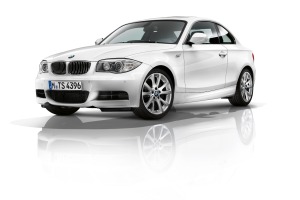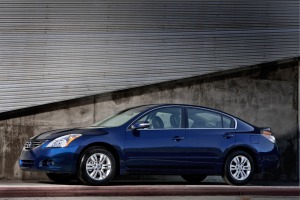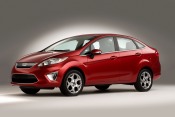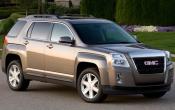Why Hybrids and Diesels Don't Always Save You Money
And Why You Shouldn't Cross Them Off Your Shopping List
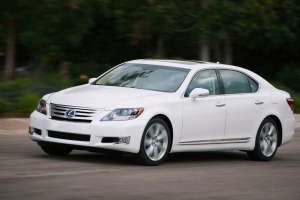
Hybrids and the current crop of clean diesels offer impressive fuel savings over their gas counterparts. But hybrid and diesel technologies aren't cheap and often add thousands of dollars to a car's sticker price. As recently as 2010, the federal government offered tax credits that helped soften the financial impact. That spurred sales and encouraged consumers to adopt this new technology.
But these tax credits stopped on January 1, 2011. With their expiration comes a good question for consumers: Are hybrids and diesels a good value?
A few years ago, Edmunds editors came to the conclusion that hybrids didn't make financial sense. Even with the federal tax credits available at the time, it would have taken a number of years before anyone would start to see significant savings from a hybrid over a comparable non-hybrid vehicle. Now that the credits are gone, the pure financial case for hybrids and diesels has weakened further.
Break-Even Times
Most people don't keep their cars long enough to realize savings from them. If you're like the average person, you hold onto a new car for five to six years. After that, you're looking toward purchasing a new one. Unless you keep the hybrid or diesel past its "break-even" period — the amount of time it would take you to save enough money on gas to offset the additional expense of buying the hybrid — it's not the wise choice. (For a look at some of the vehicles with the shortest break-even times, see this related story.)
Here are the break-even times of a few popular hybrids and diesels compared with their gasoline-model equivalents. This data assumes the driver averages 15,000 miles per year and that the national gasoline price is $3.11 per gallon and $3.42 for a gallon of diesel:
Hybrids:
Ford Fusion Hybrid: 6.6 years
Honda Civic Hybrid: 6.8 years
Lexus RX 450h: 6.8 years
Nissan Altima Hybrid: 10.3 years
Toyota Camry Hybrid: 7.8 years
Diesels:
Audi A3 TDI: 2.3 years
BMW X5 xDrive35d: 25.2 years
Mercedes-Benz E350 Bluetec: 2.2 years
Volkswagen Jetta TDI: 13.8 years
Volkswagen Touareg TDI: 8.1 years
The Toyota Prius is hard to gauge because it doesn't have a gasoline equivalent. But when compared to the Toyota Corolla, the Prius would take 6.3 years to break even. Compared to the Toyota Camry, however, it takes less than a year (0.7).
These break-even times are so long because hybrids and diesels are still pricey cars. Although hybrids have been around for more than 10 years, the technology hasn't been streamlined in a way that can bring costs down. Every automaker seems to have its own take on the technology. Plus, nearly every hybrid uses rare earth metals like lithium, lanthanum and neodymium, whose prices have increased as more products (i.e. laptops and cell phones) use these batteries.
Lastly, the hybrid and/or diesel version of a vehicle is often positioned as the brand's high-tech model and as such, it's loaded with more options than would normally be found in the gasoline equivalent. Buyers aren't just paying more for the technology, but also for added navigation, all-wheel drive or leather seats.
The Case for Hybrids and Diesels
It's easy to get fooled by the advertising and think that as soon as you purchase a hybrid or diesel vehicle you will start saving money. That's not true, but there are still reasons why people choose these cars:
- Reduced greenhouse gas emissions: People buy hybrids because they want a vehicle that uses less gasoline and thus reduces their carbon footprint. For them, the choice of car isn't based on saving money, but on reducing their impact on the environment.
- Fewer trips to the gas station: Not having to fill up your car with gas on a weekly basis is such a powerful feeling that many people buy hybrids or diesels just to delay those inevitable trips to the gas station.
- The prospect of steeper gas prices: The break-even numbers in this article can change. They are snapshots of current gas prices and assume that a person drives 15,000 miles per year. If gas prices go up — and a number of signs say they will — the break-even times fall dramatically. That's also the case for owners who drive more than the 15,000-mile average in these examples.
Hybrid and Diesel Alternatives
If you are put off by the break-even times on new hybrids and diesels but want to save money on fuel, there are a number of alternate routes to take:
- Keep your car: In most cases, you'll save money by simply hanging on to your current vehicle. The cost of buying a new car has to be offset before it can start saving you money on gas. Use our gas-guzzler calculator to determine whether the jump to a new car would make sense.
- Consider a new fuel-efficient conventional car: The Chevrolet Sonic, Ford Fiesta and Hyundai Elantra are a few examples of the new breed of compact cars that can get hybridlike fuel economy. Each of these achieves up to 40 mpg on the highway.
- Shop for a used fuel-sipper: If a new fuel-efficient car is beyond your budget, consider buying a used car that gets good mileage. A 2005 Honda Civic, for example, averages about 30 mpg in mixed driving. A quick search of used car listings shows that a 5- or 6-year-old Civic can be had for roughly $10,000 less than a new Civic Hybrid whose mpg is about 41 mpg.
Seeing Through Hybrid and Diesel Hype
Hybrids and, to a lesser extent, diesels, get a lot of media attention. But the fact is that they only constitute 2.4 percent of all cars sold. Price is likely one reason for those meager sales figures. If you want to reduce your carbon footprint or take advantage of some of the non-economic benefits of hybrids and diesels, you might be willing to pay more to do so. But if your primary interest in a hybrid or diesel is saving money on fuel, it makes sense to check out other options.






